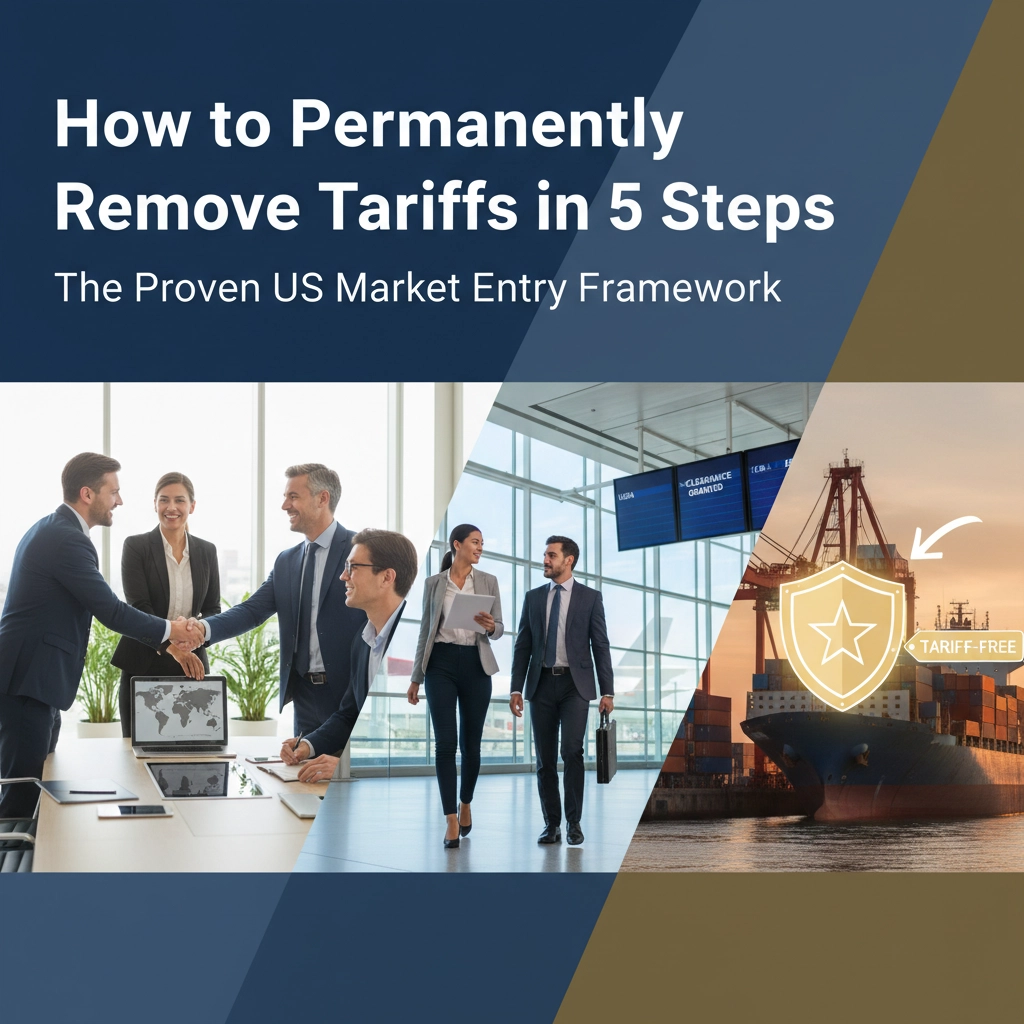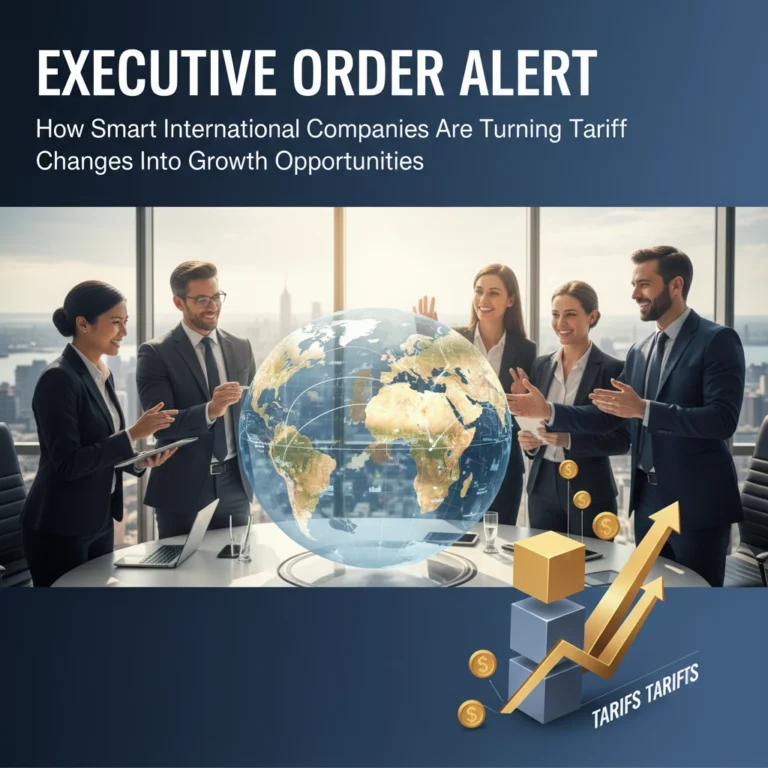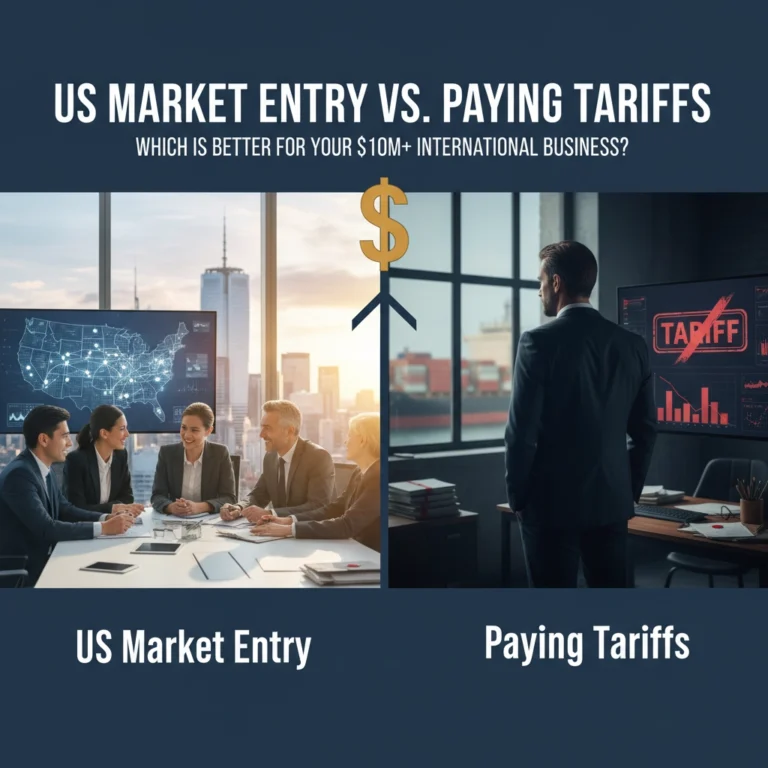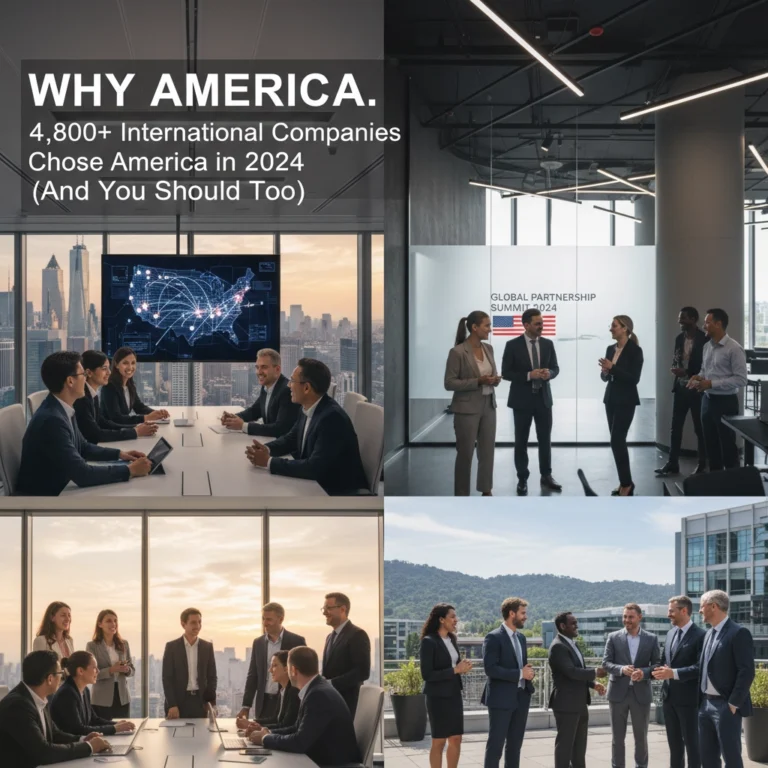How to Permanently Remove Tariffs in 5 Steps: The Proven US Market Entry Framework

Look, I get it. You're watching your margins get crushed by tariffs that seem to increase every quarter. One day you're paying 15%, the next it's 25%, and now we're talking about potential 100% tariffs on certain industries. It's enough to make any CEO lose sleep.
But here's the thing most international businesses don't realize: you can eliminate tariffs permanently. Not reduce them, not hope they go away – actually eliminate them for good. And the secret isn't some complicated legal loophole. It's about becoming genuinely American in the eyes of US regulators.
After helping 200+ international companies navigate US market entry, I've seen the same pattern over and over. Companies that follow this proven 5-step framework don't just avoid tariffs – they completely transform their competitive position in the American market.
Step 1: Establish Your US Corporate Identity
The foundation of permanent tariff elimination starts with creating a legitimate US business entity. This isn't about shell companies or paper entities – regulators see right through those. You need real substance.
What This Actually Means:
- Form a US LLC or Corporation with actual operations
- Open US business bank accounts
- Register for federal and state tax IDs
- Establish a physical business address (not a PO Box)
Here's where most companies mess up: they think a basic Delaware LLC is enough. Wrong. You need operational substance that proves you're genuinely conducting business in America, not just importing goods.
Real Example: A German automotive parts manufacturer we worked with initially tried the "simple Delaware entity" route. Customs flagged them immediately. After properly establishing operations in Michigan with real employees and inventory, they qualified for duty-free treatment on 80% of their imports.

The key is demonstrating substantial transformation or substantial business operations in the US. This means your US entity must add meaningful value to the products, not just repackage and resell them.
Step 2: Master the Free Trade Agreement Game
This is where things get interesting. The US has active FTAs with 20 countries, and if you play this right, you can structure your operations to qualify for preferential treatment.
The Strategy:
- Identify which FTA benefits apply to your products
- Restructure your supply chain to meet origin requirements
- Document everything meticulously for customs compliance
Pro Tip: You don't need to manufacture everything in FTA partner countries. Often, you can qualify through substantial transformation rules. For example, if you import raw materials from China but significantly process them in Mexico, you might qualify for USMCA benefits.
One of our clients, a furniture manufacturer, was facing 25% tariffs on imports from Vietnam. By establishing assembly operations in Mexico and qualifying for USMCA treatment, they eliminated tariffs entirely while actually reducing overall production costs.
The documentation requirements are strict, but the payoff is massive. We're talking about permanent tariff elimination, not temporary relief.
Step 3: Leverage the PTAAP Framework
Here's something most companies don't know about: the Potential Tariff Adjustments for Aligned Partners (PTAAP) program. This is your golden ticket for certain product categories.
Products That May Qualify:
- Aircraft and aircraft parts
- Generic pharmaceuticals and ingredients
- Natural resources not available domestically
- Agricultural products with insufficient domestic supply
If your products fall into these categories, you can potentially negotiate for Most-Favored-Nation tariff rates through reciprocal trade agreements. The catch? You need to demonstrate how your business relationship helps address US trade concerns.
The Application Process:
- Document how your operations create US jobs
- Show technology transfer or investment commitments
- Prove you're addressing trade deficit concerns
- Submit detailed compliance and monitoring plans

This isn't automatic – you need to make a compelling case. But companies that get approved essentially lock in preferential treatment for the long term.
Step 4: Optimize Your Supply Chain Architecture
This step is about restructuring your entire operation to minimize tariff exposure while maximizing efficiency. It's not just about where you manufacture – it's about how you move, process, and add value to products throughout your supply chain.
Key Strategies:
Tariff Engineering: Modify your products or production processes to qualify for lower tariff classifications. Sometimes a small design change can drop you from a 25% rate to a 5% rate.
Strategic Warehousing: Establish US-based inventory and fulfillment operations. Products stored in US warehouses before final processing often qualify for different treatment.
Value-Added Processing: Set up operations that genuinely transform products in the US. Even simple assembly or customization can change tariff classifications dramatically.
Case Study: A Chinese electronics company was paying 25% tariffs on finished products. By shipping components to their US facility for final assembly and testing, they qualified as a US manufacturer for tariff purposes. Total tariff savings: $2.3 million annually.
The key insight? Customs looks at where the "substantial transformation" occurs. If that happens in the US, you're golden.
Step 5: Build Bulletproof Compliance Systems
This final step is what separates the pros from the amateurs. Having great strategy means nothing if you can't prove compliance to customs officials who are trained to spot inconsistencies.
Your Compliance Checklist:
- Maintain detailed records of all manufacturing processes
- Document employee roles and operational activities
- Keep evidence of genuine business substance
- Create audit trails for all financial transactions
- Establish regular compliance reviews and updates
The Documentation That Matters:
- Payroll records showing US employees
- Lease agreements for US facilities
- Bank statements proving operational cash flows
- Customer contracts and invoices
- Supply agreements and shipping records

Warning: The IRS and Customs work together more than most people realize. If your tax filings don't match your customs declarations, you're in trouble. Everything needs to be consistent and defensible.
One client learned this the hard way when customs audited their "US operations" and found minimal substance. The penalties were brutal – $180,000 in back duties plus fines. Don't let this happen to you.
The Reality Check: This Isn't a Quick Fix
Let's be honest about what this framework requires. You're not going to eliminate tariffs overnight with some simple paperwork trick. This is about fundamentally restructuring how you do business in America.
Timeline Expectations:
- Entity formation and setup: 2-3 months
- Operational establishment: 6-12 months
- Customs qualification: 3-6 months after operations begin
- Full tariff benefits: 12-18 months from start
Investment Requirements:
Most companies need to invest $500K-$2M in legitimate US operations to make this work. But when you're saving 15-25% on millions in imports, the ROI is obvious.
The Bottom Line
Tariffs aren't going away. If anything, they're getting more complex and expensive. Companies that wait for political changes or hope for trade wars to end will keep bleeding money.
The companies that win are the ones that stop thinking like importers and start thinking like American businesses. They establish real operations, create genuine value, and play by the rules – but they play to win.
This framework works because it's based on legitimate business principles, not loopholes. You're not trying to game the system – you're becoming part of it.
Ready to stop paying tariffs forever? The framework is proven, but execution is everything. Most companies try to do this alone and end up with costly mistakes that take years to fix.
That's exactly why we created our US Market Entry program. We've helped over 200 international companies implement this exact framework, with an average tariff savings of $1.8 million per client.
Want to see if your business qualifies for permanent tariff elimination? Let's talk.






